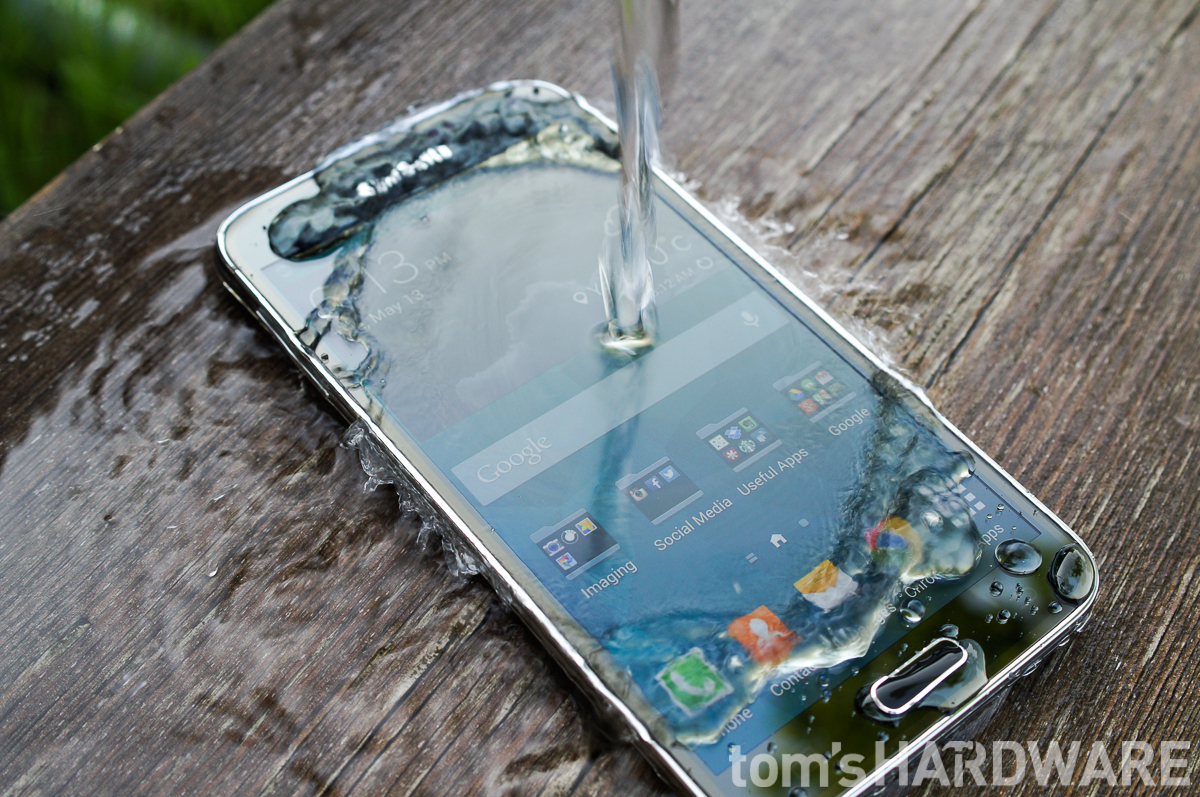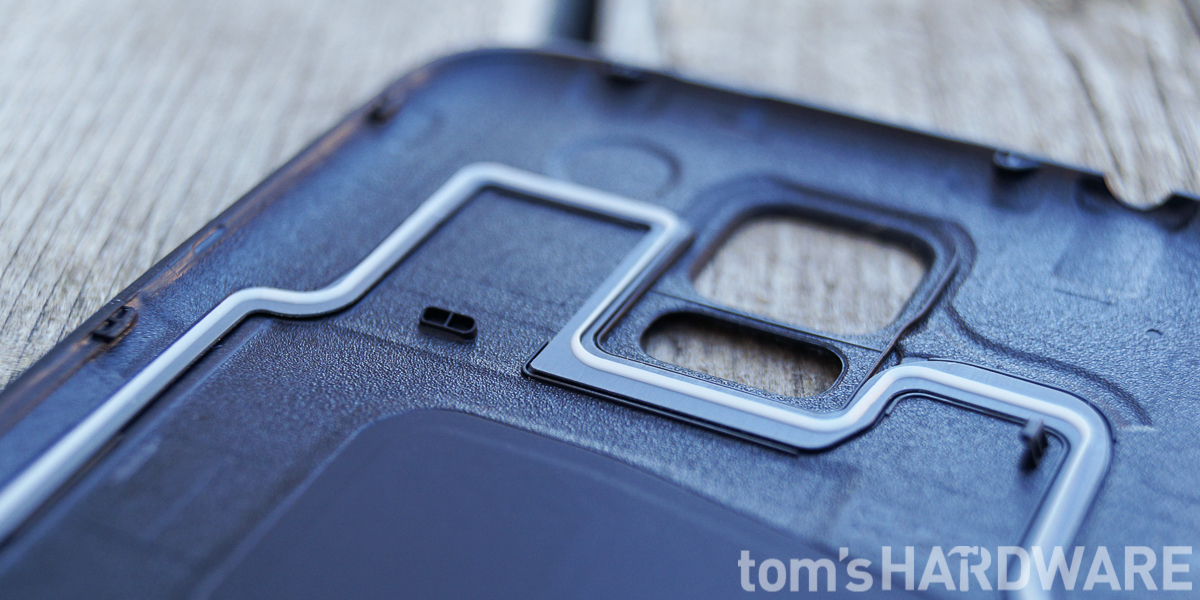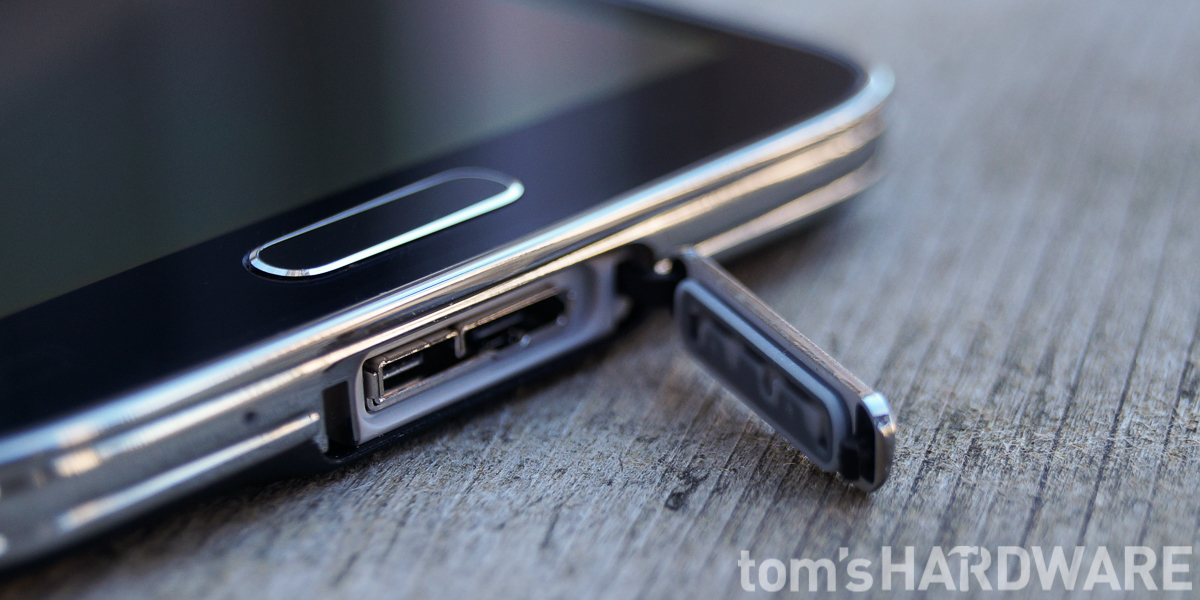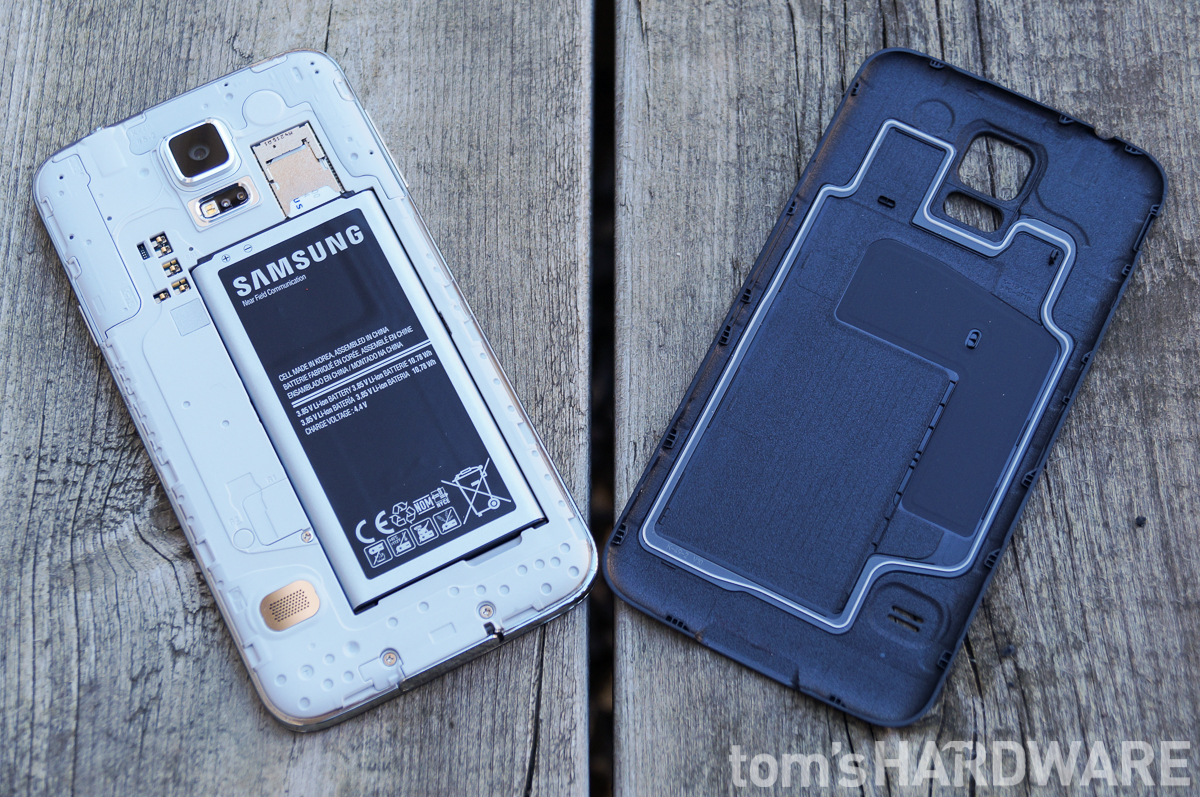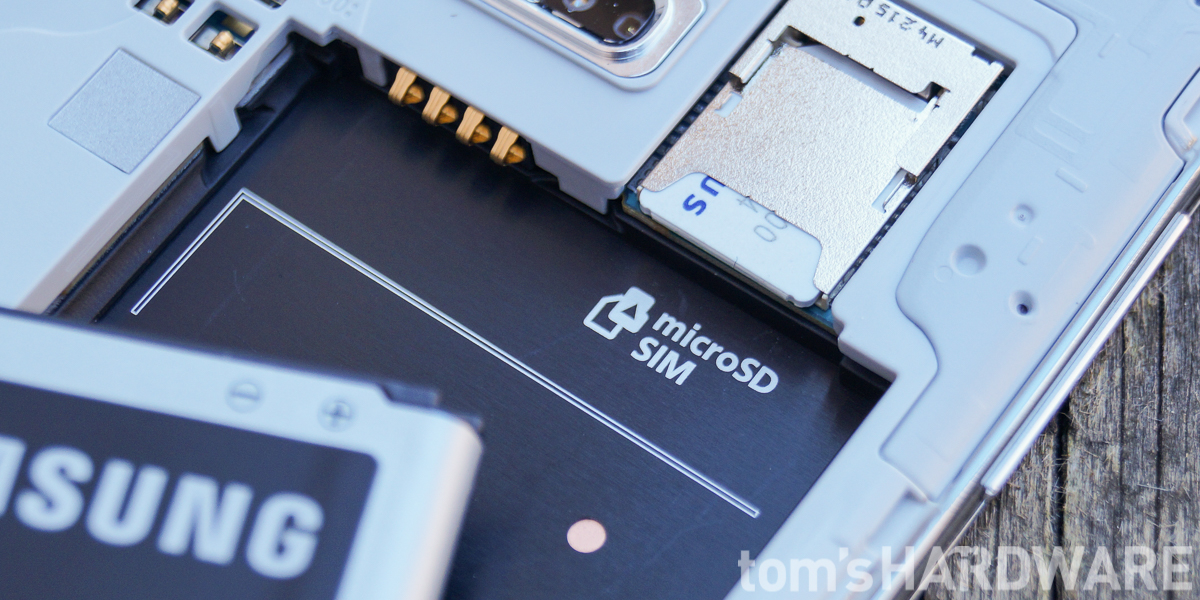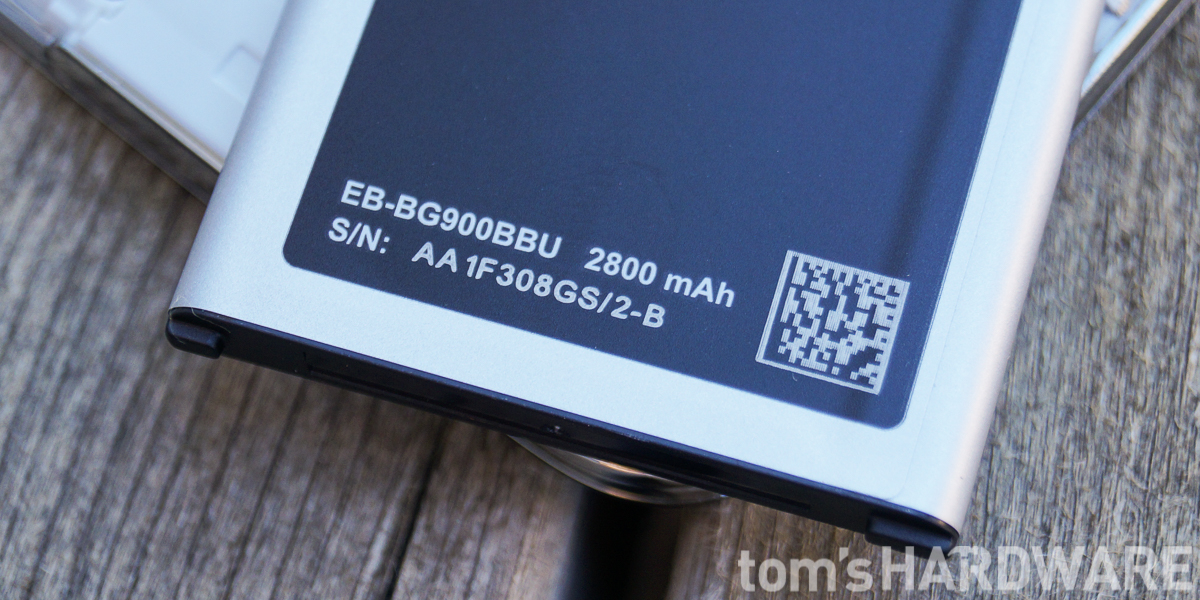Samsung Galaxy S5 Smartphone Review
Will the gravity well from Galaxy S5 capture your interest, or will you streak past with escape velocity?
Why you can trust Tom's Hardware
Taking A Look Inside: Dust And Water Resistance
One feature that's been gradually gaining popularity in smartphones over the past few years is protection from dust and water. While it does add to the BOM cost of a phone, its usefulness is readily apparent to anyone who has brought their phone to the beach or dropped it in the toilet. Sony is one of the biggest proponents of this functionality, with several of its Xperia phones offering protection from the elements. Several other OEMs, like Motorola and now HTC with the Desire Eye (IPX7), also include some form of protection for select phones. Samsung too has offered specialized versions of its phones with environment protection like the Galaxy S4 Active. The Galaxy S5, however, marks the first time Samsung offers this feature on a conventional flagship model.
With an IP67 rating, the S5 is completely sealed against dust contamination and can be immersed in liquid up to 1m deep for 30 minutes. This presents special design challenges to ensure all buttons, speakers and ports are sealed. Other parts like the camera module and LED flash/heart rate sensor module are already airtight. The removable back cover requires a rubber gasket, not to keep water out of the cover, but to isolate the battery and openings that lead to to the interior of the device (such as the microSD and microSIM slots).
While the headphone jack does not require any sort of plug, the micro-USB 3.0 port requires a gasketed flap to keep dust and water out. This flap is not unique to the S5, as other IP-rated phones like Sony's Xperia Z series also use a flap to seal the USB port. This flap is a mild inconvenience, since it needs to opened and closed every time you want to charge the phone; however, the added protection it provides is probably worthwhile.
After every charge and boot sequence, the phone reminds the user to preserve the IP67 rating by securing the back cover and making sure the USB flap is closed. This reminder gets old fast, but is necessary considering how rushed and absentminded people can be—just think about how many folks you see driving around with their car's gas cap dangling against the fender.
Removing the back cover reveals the sensitive parts the rubber gasket needs to protect. In addition to the battery and card slots, the pins for connecting the optional wireless charging cover also need protection.
Above the battery and to the right of the camera are the microSIM and microSD card slots. While it's good to see the inclusion of the microSD card slot (a staple of Samsung phones), we are a bit surprised to see Samsung continue to use microSIM cards.
The company continues to provide a removable battery for its Galaxy phones (in this case 2800mAh). Since the battery houses the NFC components, care needs to be taken when ordering additional batteries to ensure they support NFC.
Get Tom's Hardware's best news and in-depth reviews, straight to your inbox.
Having dust and water resistance is a plus for the Galaxy S5. The flap covering the USB port adds some inconvenience, but it's a small price to pay for the additional protection it affords your phone.
Current page: Taking A Look Inside: Dust And Water Resistance
Prev Page Galaxy S5 Look And Feel Next Page Fingerprint Scanner-
grumpigeek My Galaxy S5 in in an Urban Armor Gear case that looks great and protects the phone, so I don't really care what it looks like.Reply
The device is 100% reliable and I have found the battery life to be excellent - way better than any smartphone I have had previously.
-
implantedcaries Guys you are reviewing a mobile which was released a year and then calling it average compared to competitiReply -
firefoxx04 I have an s5. This review would have been welcomed a year ago.Reply
The phone is top notch. I've known this for a while. -
implantedcaries Guys you are reviewing a mobile which was released a year back and then calling it average compared to competition?? Seriously? Yes I agree S5 is not the most exciting prospect out there for new mobile buyers now, but it wasn't so in 2014 when it was actually launched. Also its one of the very few mobiles already receiving lollipop updates.. No mention of that.. Any hidden agenda against Samsung?Reply -
FritzEiv Folks, you're right. This review is quite late. We began testing the S5 a long time ago, but we've had a bit of a backlog of smartphones to review since Matt (our senior mobile editor) started on staff and we're just catching up. We aren't trying to pretend it's a new phone, thus we haven't put it up in our main feature carousel; but we did want to publish this and others just to have them for archival and future referral and comparison purposes. We are working on other smartphones that are little more current and then we hope to be "on time" as new ones arrive. Hence, for example, Matt's performance preview of Qualcomm's Snapdragon 810 earlier this week. We've been a bit more timely on devices like the OnePlus and the iPhone reviews as well. But hey, continue your sarcasm, because we probably deserve it. Just want you to know why we are doing this, that we're not trying to fool anyone, and that we'll be caught up in short order. Thanks for your patience.Reply
- Fritz (Editor-in-chief) -
Mac266 One thing in this review irritated me: the whole "it's ugly" thing. It might not suit you, but lots of people like the way it looks. Aesthetics are purely subjective, and should definitely not be judged a con on one mans opinion.Reply -
peterf28 Iam not buying a smartphone again where the chipset drivers are not open source. Like what samsung did with the S3, it is stuck on Android 4.3, and there is nothing you can do. All the custom roms are unstable crap because there are no up to date drivers For current kernels. It is like buying a PC without the possibility to update the OS . Would you buy that ?Reply -
jdrch FYI phone speakers are placed on the back of phones to take advantage of acoustics when the phone is laying on a surface. The surface spreads and reflects the sounds back to the user much better than the speaker itself would. Try it yourself.Reply
